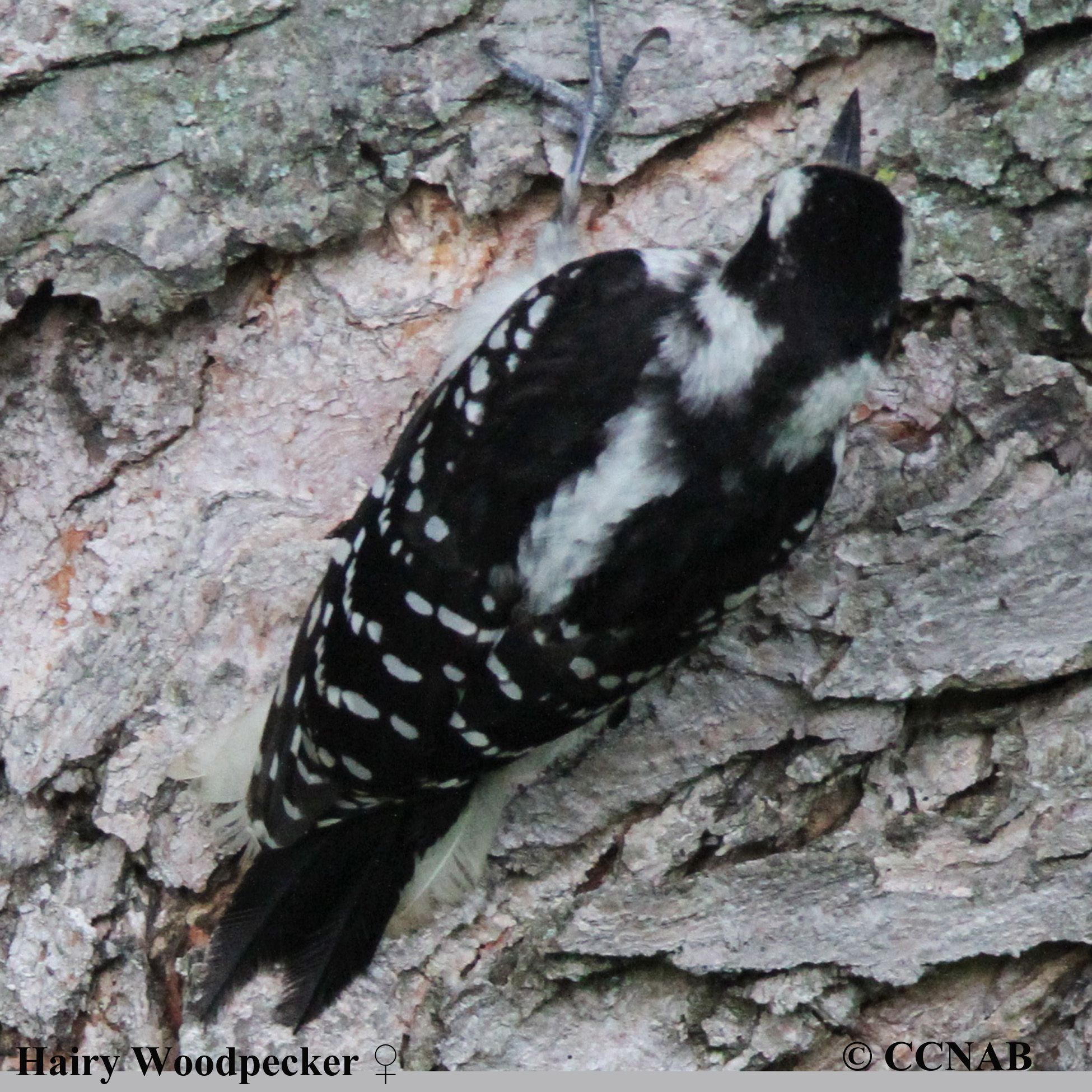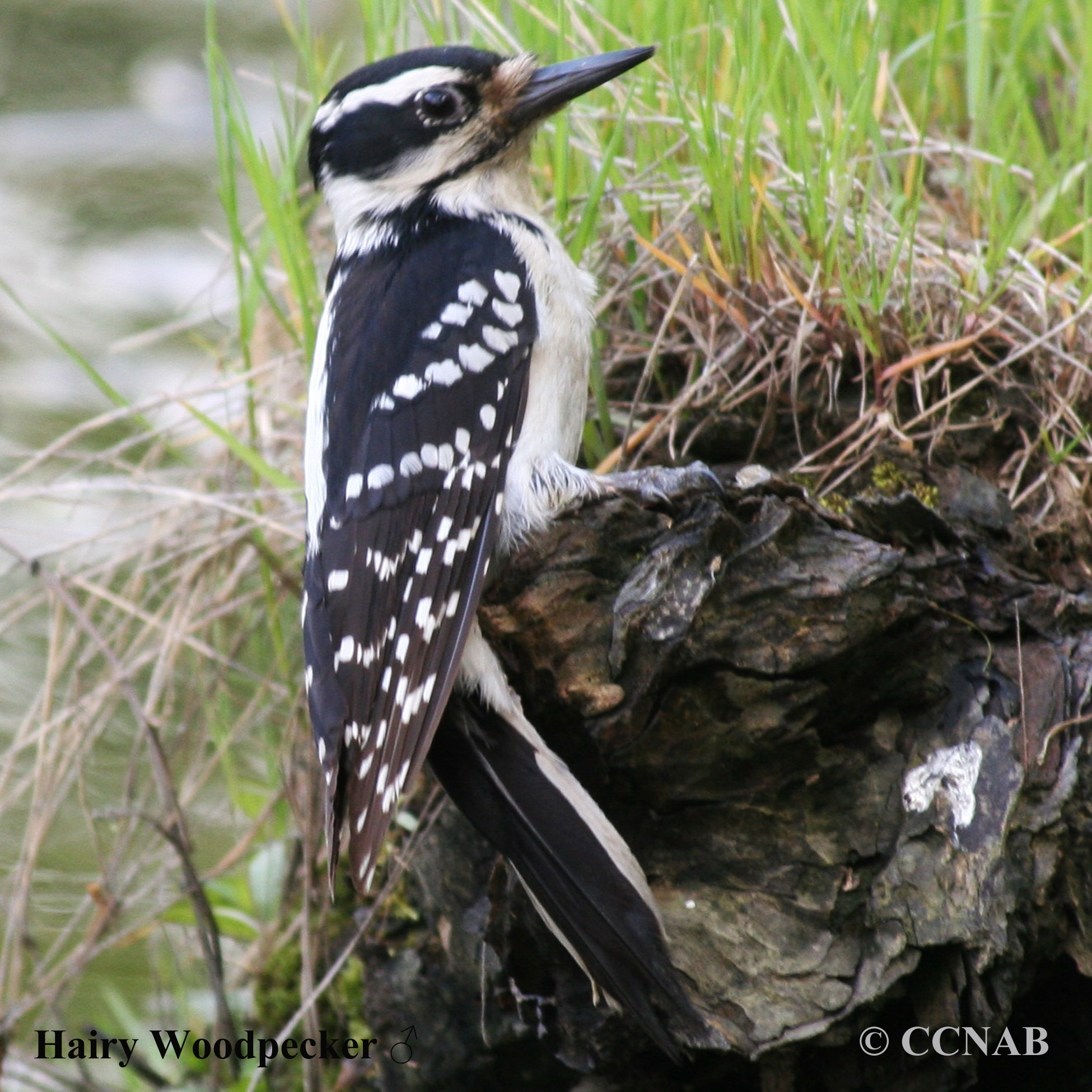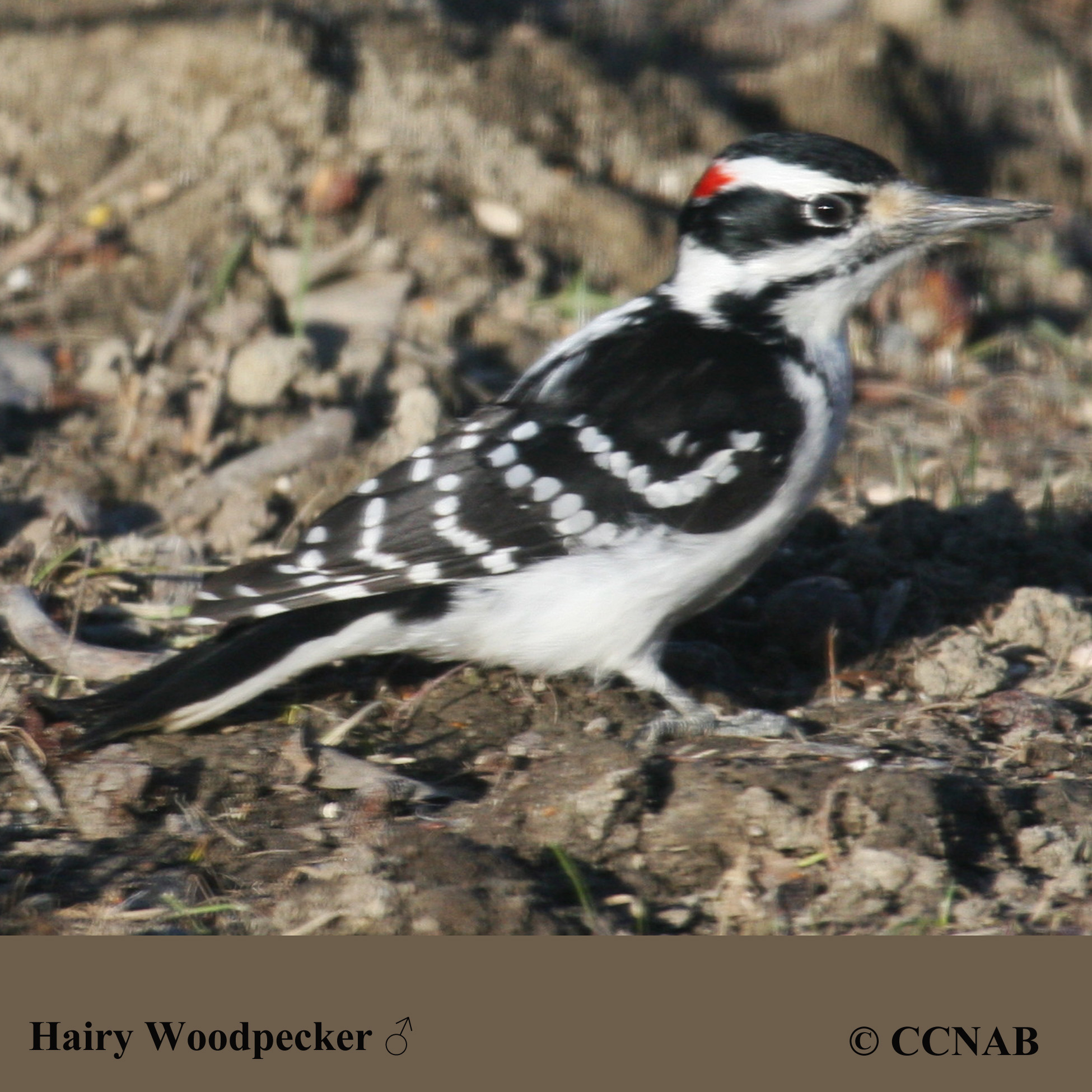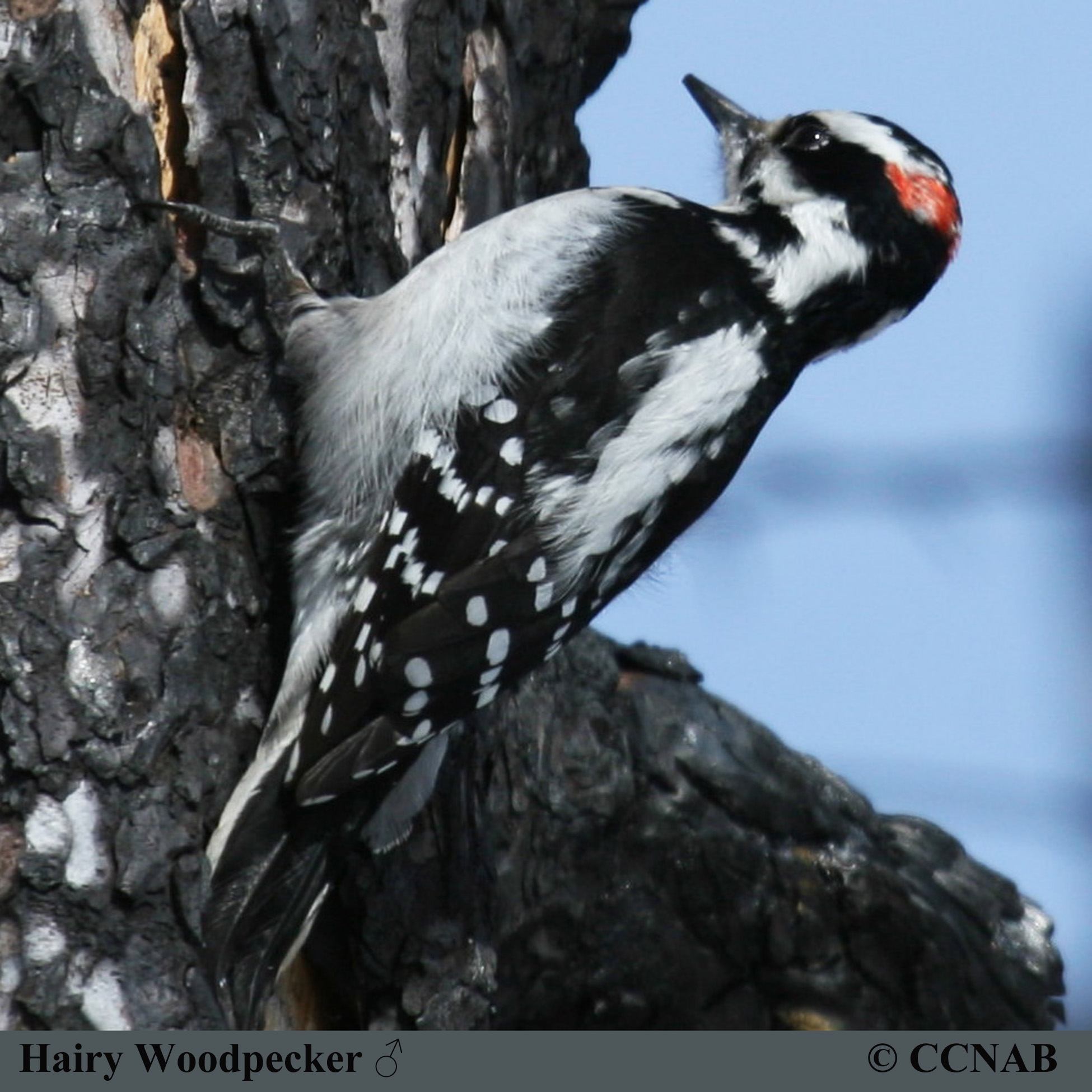North American Bird Search Box
This search box can be used to find bird species using bird's english, french or latin name, or to identify bird by its 4 letter Alpha Code
Field Guide for all the Birds of North America
Hairy Woodpecker
4 Letter (english names) Alpha Code: HAWO (1)
Pic chevelu
Dryobates villosus
Information, images and range maps on over 1,000 birds of North America, including sub-species, vagrants, introduced birds and possibilities
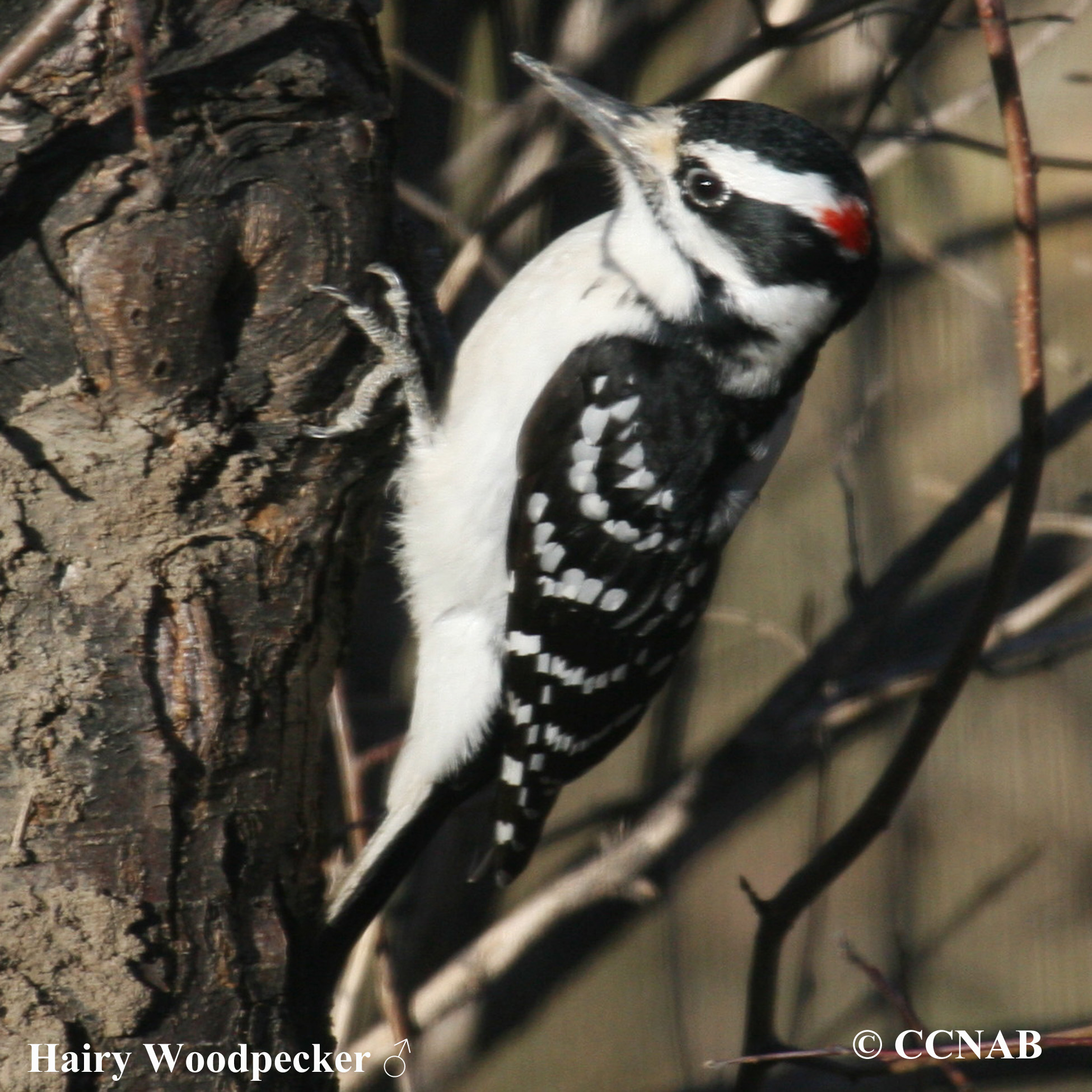
Species: The Hairy Woodpecker (Picoides villosus) is one of the most common and widespread woodpeckers seen in North America. It is almost identical to the Downy Woodpecker, except for being a larger bird in appearance, with a larger and longer bill compared to the size ratio. It is a shy bird around people. It prefers coniferous and deciduous forests.
Distinctions: The male and female are similar in appearance, mostly black and white. Western subspecies from beyond the Rocky Mountain range, show a darker sooty to browner plumage. Males have two red occipital or nuchal patches on the back of their crowns. Both birds have bold superciliums above their eyes, large white areas from their nape to the tail feathers. Most have large white spots on their wings.
Voice: Single call notes, sounding like "peek", rapid lyric-type chattering, and rapid drumming using branch stubs, utility poles and even metal objects, to define their territories.
Nesting: Four to five white eggs, one to two broods per year, depending on the circumstances. Birds peck out their nest in tree trunks to form cavities for their young and for their own night time roosting quarters.
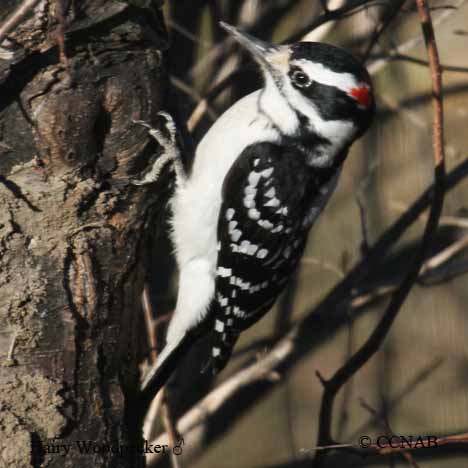
Life, Habitat & Pictures of North American Woodpeckers
| B L | W W | W | Family | Latin Name |
|---|---|---|---|---|
| 9.25" 23.5cm | 15" 38.1cm | 2.3oz 65.2g | Picidae | Dryobates villosus |
North American Birds Videos
- Click here - Female
- Click here - Male
North American Bird Calls
- Click here
- Click here
- Summer
- Year Around
- Winter
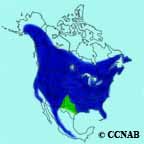
Distribution: Found mostly in forests but can also be found in parks, woodlots and towns. Seen from Newfoundland and Labrador to Northern Alaska, down into California and across to Florida, but not as popular in the south. Seen as far south as Panama and is a resident on the Bahama Islands.
Reference to Other Bird Site:
ABA - American Birding Association This site represents an organization that maintains official records of all birds species that have been proven to have been seen inside the perimeters of the North American Continent and the surrounding bodies of water. Regular revised versions are posted to keep the bird list current at all times. This is the list used by all serious birders over their lifetime. You may be aware of the movie called the "Big Year". It was with this list that all the competing birders used in an attempt to set a new record as to how many bird species that could be seen by an individual birder in one calendar year.
